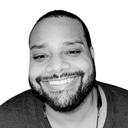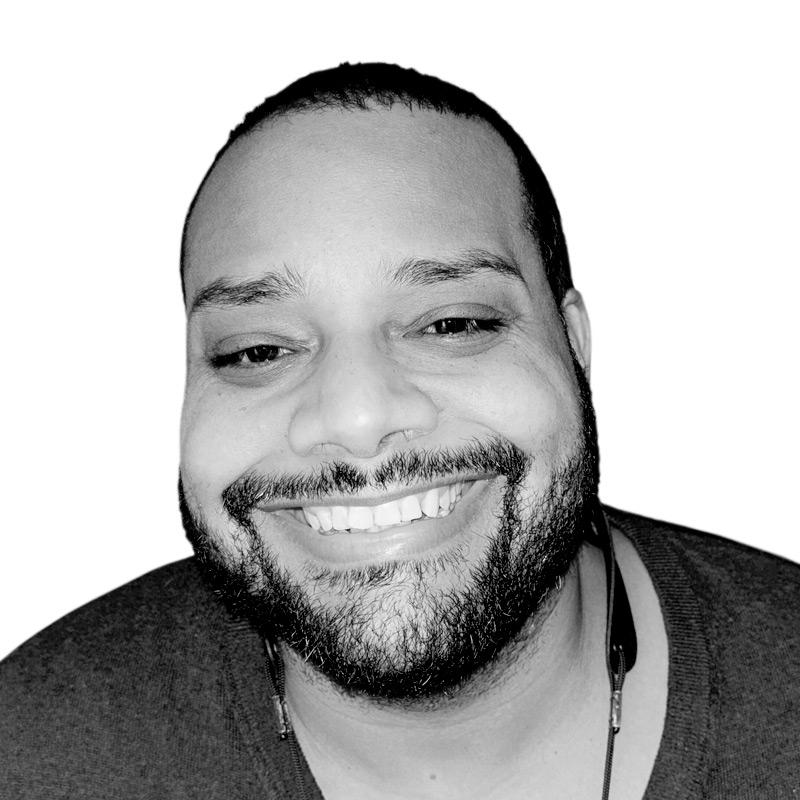
D’Angelo—Michael Eugene Archer, from my hometown, Richmond, Virginia—was the most enigmatic R&B star since Prince. In 30 years, he released just three studio albums, a slight catalog compared with Prince’s countless volumes, certainly. Yet D’Angelo was royalty nonetheless. He was reportedly working on a fourth album as recently as last year.
D’Angelo died on Tuesday, at age 51, from complications due to pancreatic cancer.
In the cruelest of coincidences, the singer Angie Stone, the mother of D’Angelo’s first son, died in a car crash earlier this year.
This past summer marked 30 years since the release of Brown Sugar, the breakout album that D’Angelo sang, wrote, and produced along with Raphael Saadiq, A Tribe Called Quest’s Ali Shaheed Muhammad, and producer Bob Power—a hip-hop and R&B dream team in 1995.
Given certain persistent objections to the term “neo-soul,” Brown Sugar may well at this point be the preferable shorthand for the time, style, vibe, and overall modus operandi of the genre. This was the era of D’Angelo, Maxwell, Bilal, Erykah Badu, Lauryn Hill, Jill Scott, and the Roots, the musical movement of a new Black sensuality that fused elements of R&B, hip-hop, spoken-word poetry, and jazz. On “Lady,” which was the biggest hit from Brown Sugar, D’Angelo was spitting game but also summarizing the dualities of this movement: “Maybe at the liquor store / Maybe at the health food stand / They don’t know that I’m your man.”
There was Brown Sugar, and then, right at the turn of the century, there was Voodoo, the snappy R&B masterpiece that made D’Angelo a sex symbol—for better or worse. The music video for the album’s biggest single, “Untitled (How Does It Feel),” was a breathtaking portrait of D’Angelo: shirtless against a black background, braided, tatted, wearing a gold necklace and crucifix, covered in sweat, glistening from head to pelvis and lower still … his voice was already unforgettable, and now, so, too, was the rest of him.
D’Angelo was a heartthrob, but a reluctant one. The marketing for Voodoo emphasized the singer’s godly physique, but then we heard rumors and reports of his self-esteem withering under the obsessive gaze of his fans. At the end of his world tour for Voodoo, D’Angelo told Questlove, his producer and “copilot” at the time, “I'm going to go in the woods, drink some hooch, grow a beard and get fat.” That’s more or less what happened, in terms hardly so idealized: D’Angelo turned to booze, weed, and coke; he defiantly gained a ton of weight; he drunkenly crashed his Hummer into a fence and survived being thrown from the vehicle; he was arrested in a prostitution sting; he fell out with Questlove; and—somewhere in the murky blur of this period—he was dropped by his record label and left to fend for himself. The Soulquarians—the collective of Black musicians formed by D’Angelo, Questlove, and J Dilla—dissolved, and D’Angelo, save for the rare feature, ceded that decade in R&B to Usher, R. Kelly, Chris Brown, et al.
Oddly enough, though, D’Angelo turned out to be a very timely figure when he reemerged in 2014, to release his third album, Black Messiah. Here was a singer who in so many ways voiced a certain mesmerization with the Black musical tradition; here was an album that sounded so powerfully attuned to the pro-Black protests of the day. During this period, the producer Terrace Martin told me all about how D’Angelo’s Black Messiah influenced his production on Kendrick Lamar’s To Pimp a Butterfly, with the two albums being widely regarded as kindred pro-Black spirits.
D’Angelo’s return was miraculous. Here was a musician making some of the best music of his life, when everyone least expected it. Here was a romantic, reborn.
No longer a nervous heartthrob, D’Angelo was now an older, wiser figure who had indeed made the most of his time in the proverbial wilderness. Black Messiah was, if not his life’s work, a profoundly gratifying realization of what felt like a lifetime away from us.
Still, D’Angelo didn’t totally return to public life. He spent most of the following year on a world tour explicitly billed as his “Second Coming.” He then once again seemed bound to disappear, although with hints of serenity this time around; no mug shots, no defiant transformations or emancipations, only a loosely felt sense that we’d see him again if and when the stars aligned. We’d come to terms with D’Angelo being a rare cosmological event.
He was lying low and publicly seemed to be doing well enough. He played a delightfully strange if relatively minor role in the development of Red Dead Redemption 2; he’d turn up at Rockstar Games’ headquarters in Manhattan, often at midnight, to put in work as an unofficial play tester. There’s now a generation of listeners who are, strangely enough, primarily acquainted with D’Angelo via “Unshaken,” his unlikely contribution to the game’s soundtrack.
In the end, D’Angelo lived up to the images—how could he not? There’s truth in every glimpse of every phase: the thoughtful brother in heavy leather on the cover of the album that established him, the braided Adonis in the music video that immortalized him, the bearded suspect in the mug shots that brought him to infamy, and the smiling virtuoso—contented at last, one hoped—behind the keys on a tour that would turn out to be his last. His voice and his musicality mattered most, though—to him, to us—and so we’re left with three precious albums, containing a lifetime of brilliance and reverberating across the ages.



